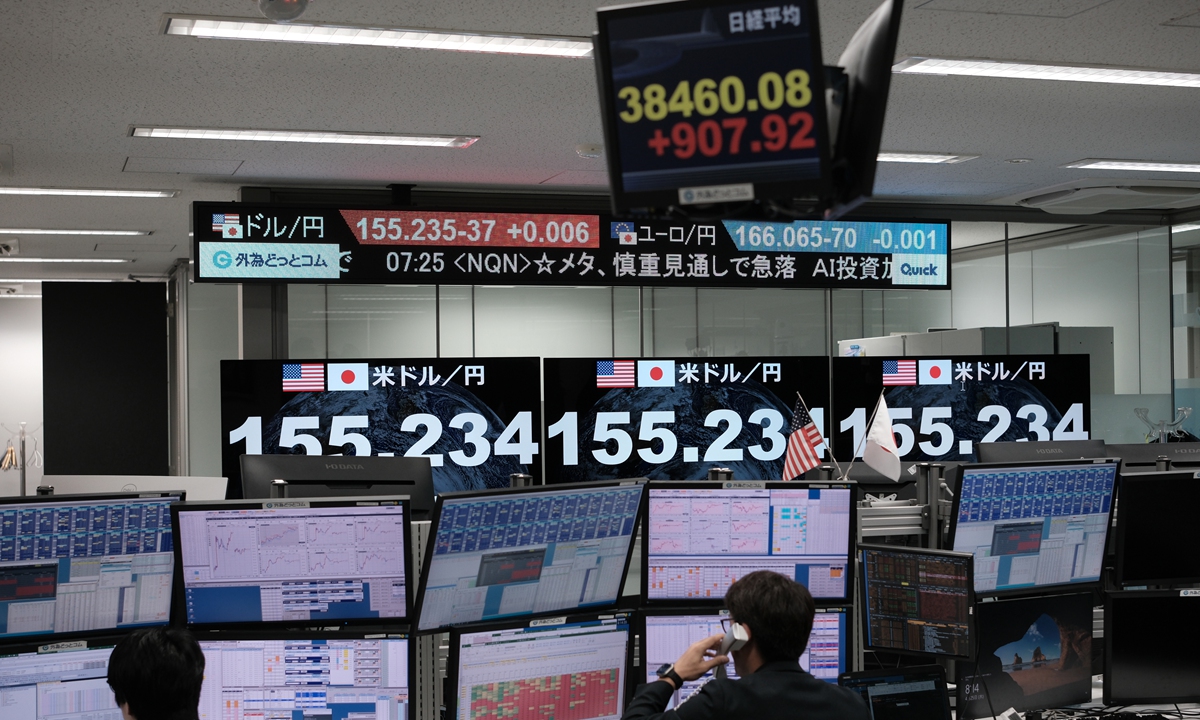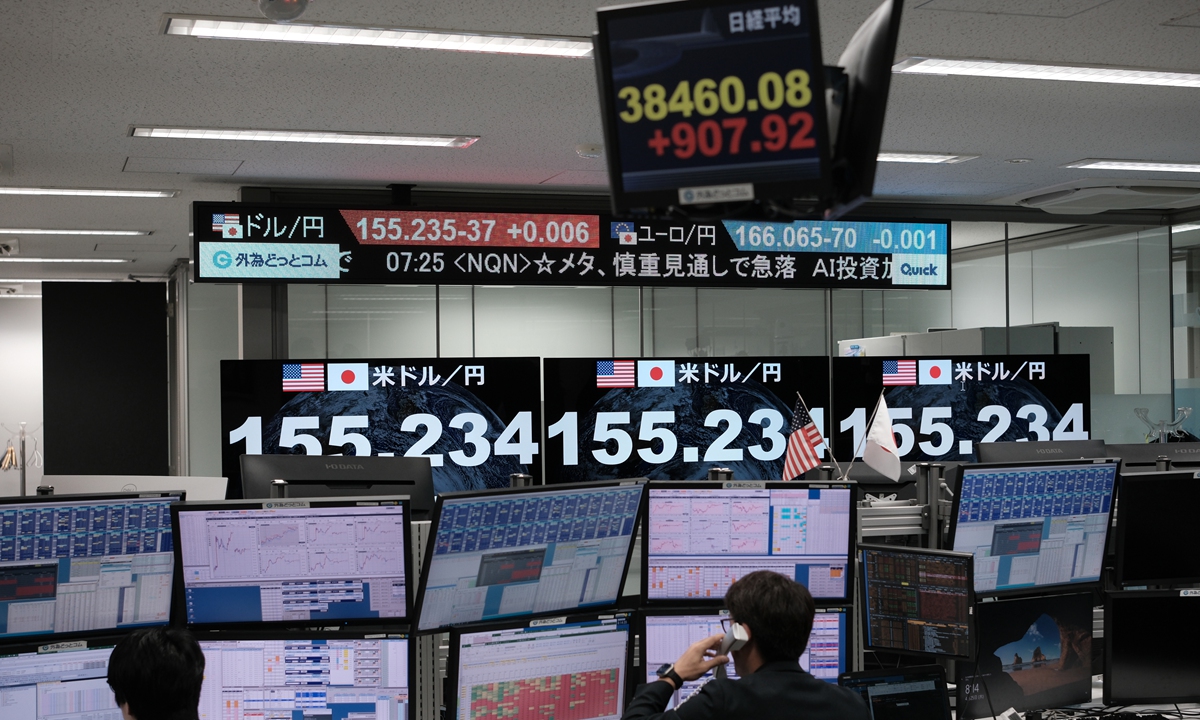
The rate of the yen against the US dollar was displayed in the trading room at foreign exchange brokerage Gaitame.com Co. in Tokyo, Japan, on April 25, 2024. Photo: VCG
Many Asian currencies have been hit this year by the strength of the US dollar, and it seems especially so for the Japanese currency. The yen hit a fresh 34-year low against the dollar on Thursday. This added to market pessimism, which had already been exacerbated by the recent depreciation of the currency.
A day earlier, the yen weakened to the 155 range against the US dollar, marking the first time since June 1990 that the yen had crossed the psychologically important 155 level. Although a depreciation of the yen is likely to make Japanese exports more competitive, the disadvantages outweigh the advantages, because Japan relies heavily on imports for energy, food and raw materials.
In general, the yen’s depreciation will increase the import costs of these items, exacerbate already-high imported inflation and force enterprises to cut production capacity.
The decline in the yen comes after stronger-than-expected US inflation data reinforced expectations that the Federal Reserve may be not in a rush to cut interest rates and the US dollar will remain strong over the coming months. In addition to the yen, some other Asian currencies are under pressure.
For instance, the South Korean won recently breached a key psychological mark of 1,400 versus the dollar, the weakest since late 2022. The stronger dollar has also weighed on other Asian currencies such as the Thai baht and Malaysian ringgit.
Depreciation pressure limits central banks’ room to maneuver on monetary policy, forcing them to consider interest rate hikes, although the tightening of monetary policy will have a negative impact on these economies.
In 2023, GDP growth in many developing countries in Asia rebounded from the impact of COVID-19. Many economists believe that this trend will continue. The Asian economy was forecast to grow by about 4.5 percent in 2024, faster than in 2023, and to remain the largest contributor to global economic growth.
We hope that growth of 4.5 percent can be achieved, but at a time when Asian currencies are being hit by a delayed Federal Reserve easing cycle and sustained strength in the dollar, depreciation pressures add uncertainty to the recovery of the Asian economy.
Some economists believe that raising interest rates to increase government intervention in the foreign exchange market is not a fundamental solution. The region’s tumbling currencies suggest that it’s crucial to strengthen industry and supply chains in Asia to withstand external shocks such as a strong dollar.
There is no need to deny that the risk of a financial crisis has risen in some Asian countries, especially those with small economies. The question is, can they afford a stronger greenback, accelerated capital outflows and higher borrowing costs?
Faced with uncertainties, Asian economies also need to consider enhancing financial cooperation and diversifying the currency composition of their reserves.
In Asia, the yuan has become one of the alternatives to the US dollar in trade settlements. China’s relatively steady economic development and robust trade with Asian countries have laid a solid foundation for the yuan to be accepted by those countries.
The yuan is facing renewed depreciation pressure after stronger-than-expected US inflation bolstered the dollar, but China is fully capable of stabilizing the market and keeping the yuan steady at a reasonable and balanced level. Other Asian countries should consider expanding currency swaps between the yuan and their currencies.
There is a solid foundation for a stable and improving Chinese economy throughout this year. China is anticipated to make more contributions to safeguard regional financial stability amid recent currency depreciation in some Asian countries.
